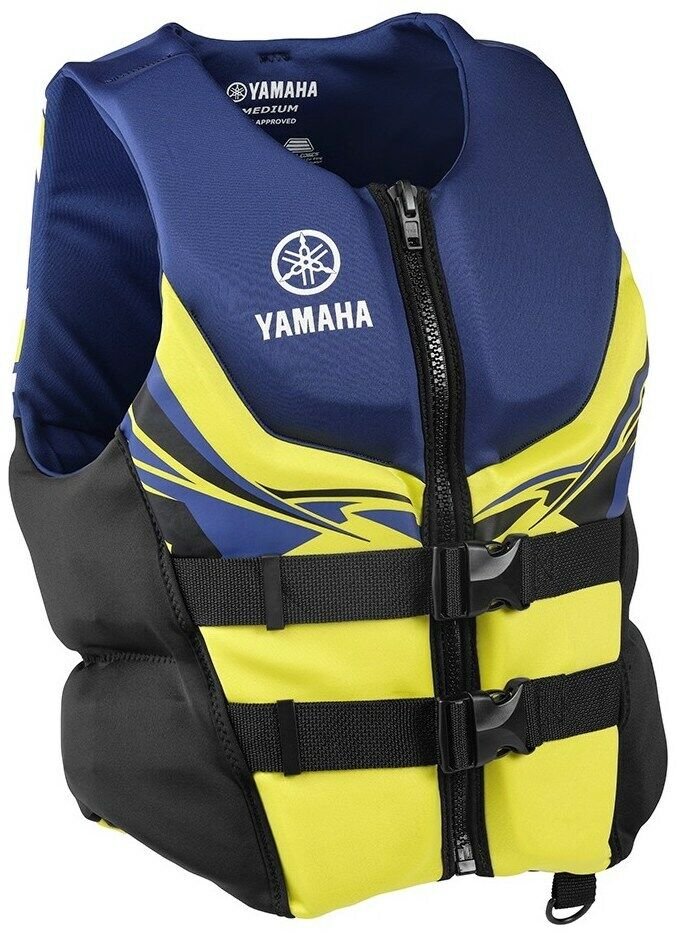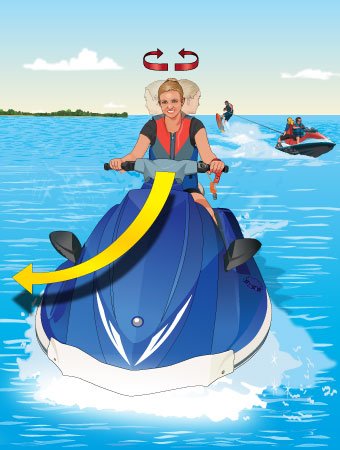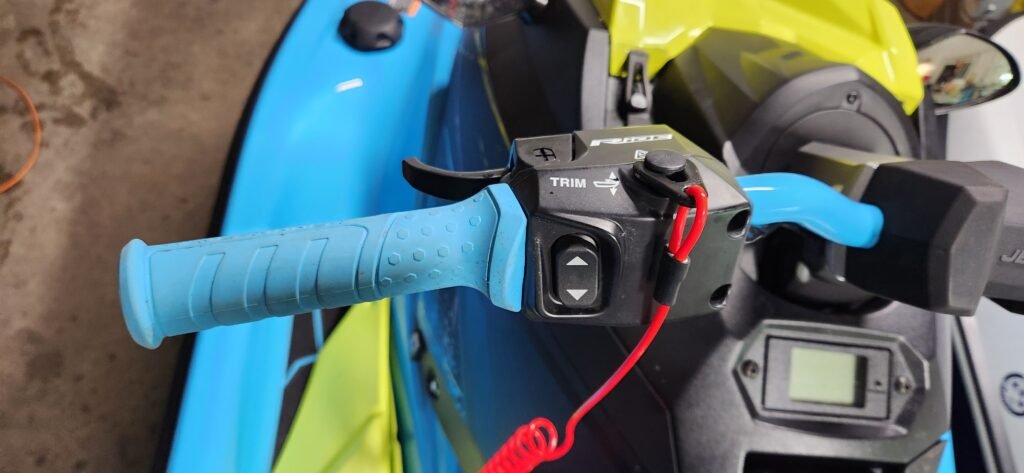This post may contain affiliate links, which means that I may make a small commission off items you purchase at no additional cost to you. Please see my terms of use page for details.
When it comes to operating a jet ski, safety should always be a top priority. Whether you’re a seasoned rider or a complete beginner, taking the necessary precautions can ensure a fun and risk-free experience on the water. Firstly, it is crucial to wear a well-fitting personal flotation device (PFD) at all times. This will not only keep you buoyant but also provide additional protection in case of an accident.
Additionally, familiarize yourself with the rules and regulations of the waterway you’ll be riding in, as they may vary from one location to another. Keeping a safe distance from other watercraft, avoiding excessive speeds in crowded areas, and maintaining control of your jet ski are also key to ensuring your safety and the safety of others. Lastly, don’t forget to constantly be aware of your surroundings, including potential hazards like shallow waters, rocks, or floating debris. By following these jet ski safety precautions, you can fully enjoy the thrill of riding a jet ski while minimizing risks.
Jet Ski Safety Precautions
Jet skiing is an exhilarating water sport that offers a thrilling experience on the open water. As with any adventure, it’s crucial to prioritize jet ski safety to ensure a fun and accident-free ride. By following a few simple safety precautions, you can enjoy the excitement of jet skiing while keeping yourself and others safe. Let’s explore some essential safety measures you should take before hopping onto a jet ski.
Wear a Personal Flotation Device (PFD)
Before venturing out on the water, it’s essential to wear a Personal Flotation Device (PFD) or a life jacket. A PFD provides buoyancy and helps keep you afloat in case of an accident or unexpected fall into the water. Choose a PFD that fits you properly and is approved by the relevant safety authorities. Remember, your life jacket must be worn, not just carried on board, as it will only serve its purpose if you have it on at all times during your jet skiing adventure.

Keep A Safety Whistle Attached to Your Life Vest
I personally recommend that you purchase and attach a safety whistle to your life jacket just in case you fall off the jet ski or if you are being pulled on a towable and you are floating by yourself in the water after being separated from your group. There is not much more frightening than a boat running full speed toward you without any way to warn them that you are in the water directly in front of them. This option is a jet ski safety precaution that I attach to all of my life jackets.
Familiarize Yourself with the Jet Ski
Whether you are renting a jet ski or using your own, take some time to familiarize yourself with the specific model you will be operating. Jet skis can have various controls and features, so it’s crucial to understand how they work before hitting the water. Read the operator’s manual provided by the manufacturer and pay attention to important details such as the throttle, steering mechanisms, emergency shut-off buttons, and any other specific features unique to the jet ski you will be using. On today’s modern jetskis they are also fitted with a water brake or brake lever which when operated it drops the reverse bucket to redirect the jet thrust to slow the craft down.
Check the Weather and Water Conditions
Before setting off on your jet ski adventure, always check the weather forecast and water conditions. Inclement weather or rough waters can significantly impact your safety and enjoyment. Strong winds, thunderstorms, or choppy waters can make jet skiing hazardous. Keep an eye out for any warnings or advisories from local authorities or lifeguards. If conditions are unfavorable, it’s best to postpone your ride for another day when the weather and water conditions are more suitable.
Avoid Drinking Or Alcohol While Operating A Jet ski
Jet ski safety is paramount when operating these powerful watercraft, and one crucial aspect is abstaining from alcohol or liquor consumption. Intoxication significantly impairs judgment, coordination, and reaction time, heightening the risks of accidents or collisions on the water. It’s vital to emphasize that operating a jet ski demands complete focus and alertness. Even small amounts of alcohol can affect balance and decision-making, compromising the ability to navigate safely. Prioritizing jet ski safety means making responsible choices, which includes avoiding alcohol entirely before or during operation to ensure a fun and incident-free experience on the water.
Maintain a Safe Speed
While jet skis may be capable of high speeds, it’s important to operate them responsibly and maintain a safe speed at all times. Speeding on the water can increase the risk of accidents and collisions with other watercraft or obstacles. Additionally, excessive speed can make it harder to control the jet ski, especially for inexperienced riders. Follow the speed limits set by local regulations and be mindful of other water users, including swimmers, divers, and boats.
Keep a Safe Distance from Other Watercraft
To avoid accidents and potential collisions, it’s crucial to maintain a safe distance from other watercraft. Watch out for boats, jet skis, kayaks, paddleboards, or any other vessels nearby. Give others enough space to maneuver and always be alert for unexpected movements. Remember, jet skis can be fast-moving and nimble, so it’s vital to practice defensive driving and anticipate the actions of other watercraft.
Avoid Operating in Restricted Areas
Many water bodies have designated areas where jet skiing is not permitted or restricted. These areas might include swim zones, wildlife sanctuaries, or environmentally sensitive areas. It’s important to respect these restrictions and adhere to local regulations. Jet skiing in restricted areas can not only harm the environment but also pose a danger to yourself and others. Familiarize yourself with the waterways and consult local authorities or signage to determine where jet skiing is allowed.

Be Mindful of the Water Depth
Jet skis require a certain minimum water depth for safe operation. Shallow waters can pose a risk of running aground or damaging the jet ski’s propulsion system. Pay attention to water depth indicators or consult nautical charts specific to the area you’ll be jet skiing in. Adhere to the minimum water depth recommendations provided by the jet ski manufacturer to ensure a safe and enjoyable ride without any unnecessary hazards.
Watch Out for Swimmers and Divers
When jet skiing, it’s crucial to keep a watchful eye for swimmers and divers in the water. Always be aware of your surroundings and stay alert for any signs indicating the presence of water enthusiasts. Slow down or steer clear of areas where people are swimming or diving. Remember that it’s your responsibility to operate the jet ski safely and avoid any potential accidents that could harm others enjoying the water.

Use the Kill Switch
All jet skis are equipped with a kill switch, also known as an engine shut-off lanyard or safety lanyard. This important jet ski safety feature is designed to stop the jet ski’s engine if the rider falls off. Make sure to attach the kill switch lanyard securely to your person before starting the jet ski, ensuring it is within reach at all times. In the event of an accidental fall, the engine will automatically shut off, preventing an unmanned jet ski from causing harm or accidents.

Know How to Handle Jet Ski Safety Emergencies
It’s essential to be prepared for emergencies while jet skiing. Familiarize yourself with basic emergency procedures, such as how to re-board the jet ski if you fall off, how to signal for help, and how to assist others in distress. Carry a communication device, such as a waterproof marine radio or a personal locator beacon, in case you need to call for help. Having a basic understanding of first aid and CPR can also be valuable skills that could make a significant difference in an emergency situation.
By following these important jet ski safety precautions, you can ensure a safe and enjoyable jet skiing experience for yourself and those around you. Remember, safety should always be a top priority whenever you embark on a thrilling water adventure. So, strap on your life jacket, familiarize yourself with the jet ski, and take to the water with confidence, knowing that you are well-prepared to have a fantastic and safe jet skiing adventure.
Related Articles:
How Fast Can A Jet Ski Go? Do You Prefer The Calm Rec. Ski Or The Intense Performance Ski?

